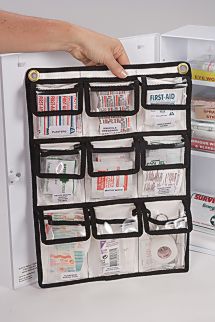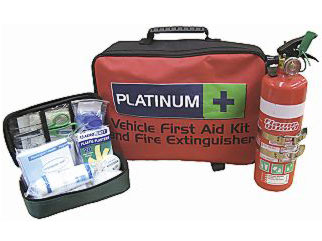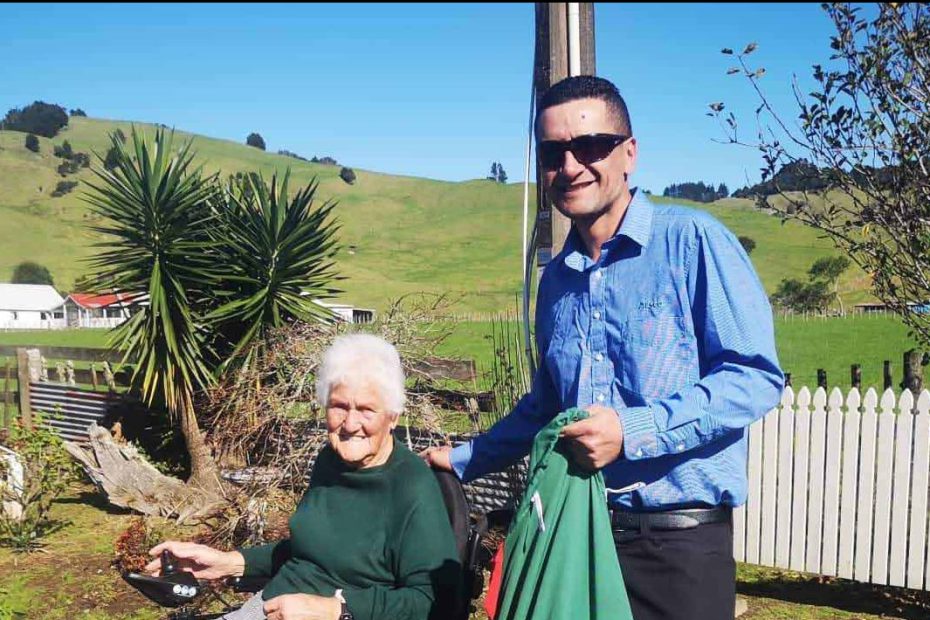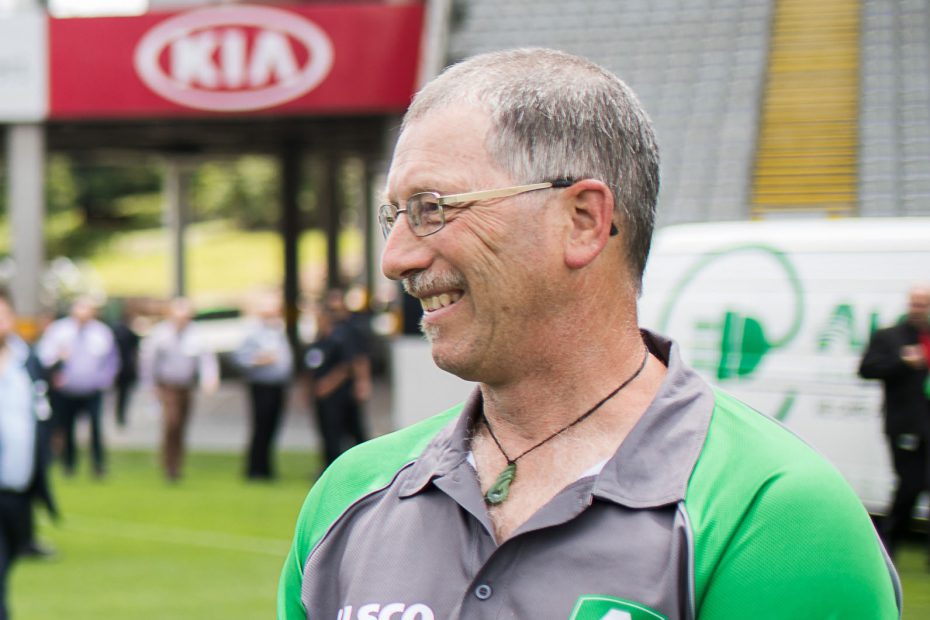The safety of your employees is important to keep your business running smoothly.
Exposure to different elements over time can affect your employees. New safety measures are required.
They include hygiene procedures, quality uniform suppliers, and stocking suitable first aid kits for your workplace.
A first aid kit contains supplies and equipment used for medical treatment. They are essential for any establishment. Do you know the contents of a first aid kit?
You should use first aid signs that show the locations of the first aid equipment. They make first aid kits easier to locate in an emergency.
Did you know that by posting signs to denote first aid kit locations you comply with NZS/AS 1319: 1994 Safety Signs for the Occupational Environment? Find out more about standards on www.standards.co.nz
Where Should You Keep First Aid Kits in the Workplace?
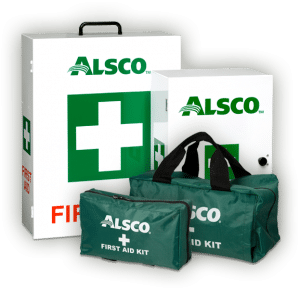
Alsco’s managed first aid kit service offers your workplace safety.
First and foremost, you need to place the kits within reach.
You should have at least one full first aid kit wherever employees are stationed. This extends to work vehicles and equipment.
The size of your establishment (both architecture and workforce) plays a big role in determining how many kits may be required, as does the kind of labour and activity involved.
A needs assessment test is important to determine how many extra kits may be necessary.
The number of kits you need also depends on the number of employees you have. You must have one kit for every 50 employees.
A multi-storey building should have at least one kit on each floor.
Large spaces such as stadiums and airports should have industry first aid kits. They should be placed wherever staff work in order to meet occupational health and safety requirements.
All venues must have clear information on how to access the equipment. It would be useless to have kits locked away in a cupboard in the event of an emergency.
Kits should be unlocked wherever possible. Employees should be informed of their accessibility during orientation.
Sealed emergency kits should be available in instances or places where kits must be locked, such as areas with high traffic from the public.
Water is often needed to clean up wounds, which is why first aid kits should be placed close to washbasins with running water and clean towels.
When water is not available, a well-stocked kit would have sterile saline solution or wet wipes and hand sanitising gel.
Kits should be placed in high-risk areas. If they are mounted on a wall, the contents should be accessible at all times.
Types of First Aid Kits
Regulations apply to both contractors and employees under the Health and Safety at Work Act 2015.
The Act and related regulations demand that workers are given the best level of protection from workplace health and safety risks within reasonable practice.
Providing such necessities can boost the image of your workplace. It could also improve relationships with your employees.
You can choose from a variety of kits, such as:
1. Office First Aid Kits
Work-related injuries can range from paper cuts to broken bones.
Accidents can happen in the most mundane ways. If not accidents, then there’s one’s health to consider.
Most first aid kits consist of nonprescription drugs, such as mild painkillers and antihistamines, which can be restocked after use.
2. Managed First Aid Kits
[b3_row]
[b3_column lg=”8″ md=”12″ sm=”12″ xs=”12″ ]
Can you picture having your first aid kit tailored to your business requirements, with the ability to choose ready-made kits that have all the basics
This package also makes you compliant with New Zealand legislation all year round since the kits will be installed, checked, and restocked for you.
There are three restocking intervals during which hospital-grade material is refilled and expired contents are removed.
Alsco carefully selects the highest quality and most durable first aid supplies as part of our service.
Plus, you get all that for a single annual fee. That means you can take a break. We’ve got it covered.
[/b3_column]
[b3_column lg=”3″ md=”12″ sm=”12″ xs=”12″ ]
[/b3_column]
[/b3_row]
3. Vehicle and Portable First Aid Kits
[b3_row]
[b3_column lg=”7″ md=”12″ sm=”12″ xs=”12″ ]
Accidents can happen at any given time. It is more practical to be safe and cautious rather than sorry.
When employees have tasks that keep them out of the office and in their vehicles driving across New Zealand, they need to be well-equipped.
Employees who also operate heavy machinery, hot/cold equipment, sharp objects and so on need access to proper safety equipment.
Having the proper kit is crucial, especially if your employees are alone. On the road, you need a light and compact first aid kit that can fit in small nooks and crannies.
[/b3_column]
[b3_column lg=”3″ md=”12″ sm=”12″ xs=”12″ ]
[/b3_column]
[/b3_row]
4. First Responder Kits
Emergency medical responders are known to have their kits close by in case of emergencies.
You never know what distress call you could be walking into.
This is why all levels of emergency medical response kits include stethoscopes, blood pressure cuffs, belt packs with shears and flashlights.
You can buy these kits online or in local stores.
5. Sports First Aid Kits
These kits focus on orthopedic injuries.
They have cold packs that vary in proportions depending on the size of the group and compression wraps.
These are great to have during outdoor activities such as team-building sessions.
They can also be bought online and in local stores, too.
Frequently Asked Questions About First Aid Kits
1. Do First Aid Kits Expire?
It is essential you ensure your first aid kit contents are checked regularly and replenished. This is important because there are cases where they are rarely needed. In such cases, some of the content expires and goes unnoticed for extended periods of time.
First aid kits often have a three- to five- year shelf life.
2. Who Regulates What Is Inside a First Aid Kit?
The contents of a business’ first aid kit is determined by the WorkSafe, which sets strict guidelines. Their guidelines differ depending on the size of the site and the number of employees.
3. What First Aid Documents Need to Be Kept?
The Safety Statement must hold the name of the professional first aider and the location of the first aid rooms, facilities and equipment.
A health and safety inspector should be able to give out written records of the dates of all first aid training, including recertification training upon request.
The information should be kept in a secure place, appropriate for their confidential nature and be made available to the health and safety inspector should the need occur.
4. What Are the Situations in Which a First Aid Kit Can Be Used?
All kinds of wounds can be treated by a first aid kit. It does not only come in handy for emergencies and large wounds. Adhesive bandages can cover up paper cuts.
A first aid kit is a place to keep and organize essentials that could come in handy in any given medical situation. It is wise to get familiar with the contents and their uses, no matter the size.
You could also read more about the main aims of first aid in the workplace
5. Which First Aid Kit Is Best?
The best first aid kit is one that has current functioning medical supplies. Kits vary on who makes them and may be different save a few crucial items.
For example, a sports kit may be slightly different than a kit in your office, which could also vary to one meant for your vehicle. If unused for a long period, supplies may expire or become less effective.
You should review the contents of your kit on a yearly basis or replace items that may be low in stock.
Why Choose Alsco’s Rented Portable First Aid Kits?
At Alsco, we believe our kits are a grand representation of our company. We aim to deliver quality, durable first aid supplies to best suit your needs. Our kits are:
- Stored in sturdy and compact cabinets that can be installed anywhere in your workplace.
- Supplied to meet the needs of unrelated industries, whether you’re in a blue-collar workspace, hospitality, a white-collar office, etc.
- Organised with colour-coded elements so injuries are treated as efficiently as possible.
- Affordable. You only get charged once a year. No reminders, no annoying emails.
If you’d like to guarantee safety at your workplace, get a quick quote here.
